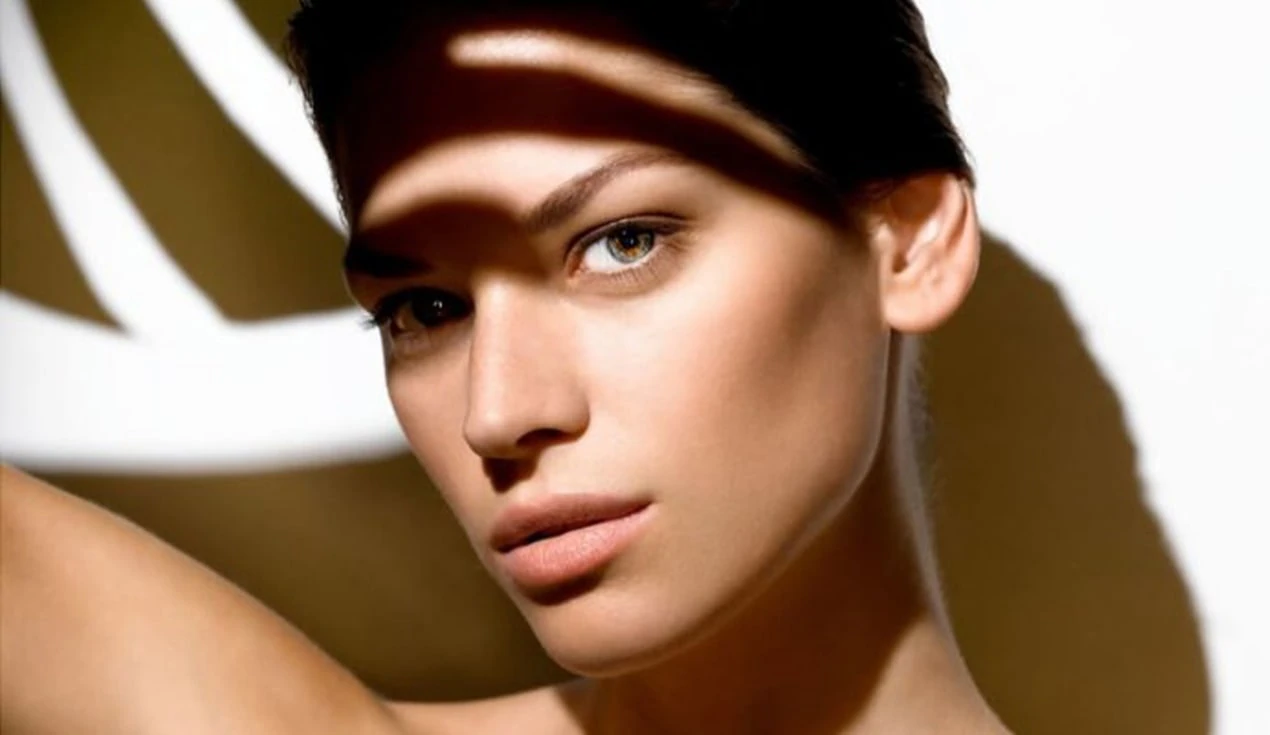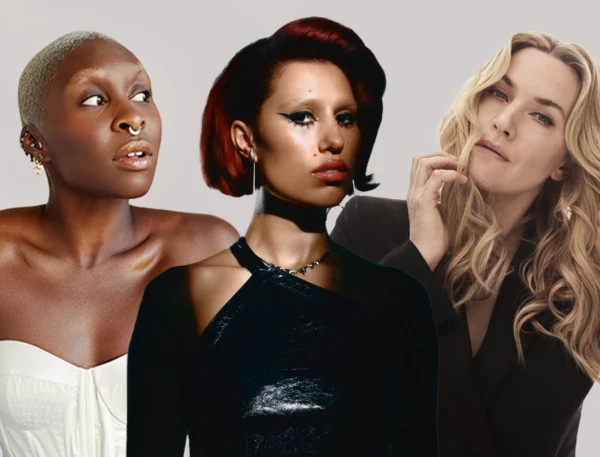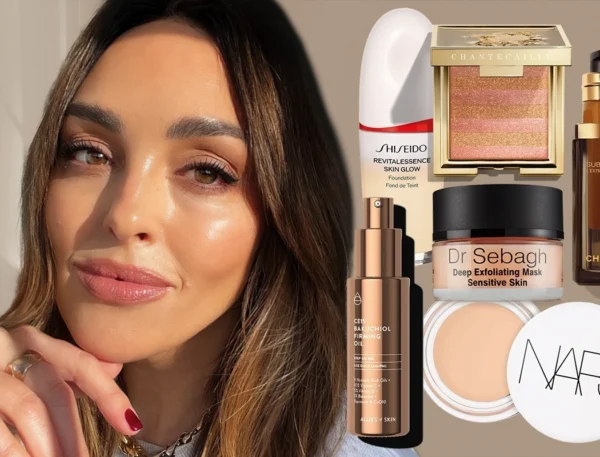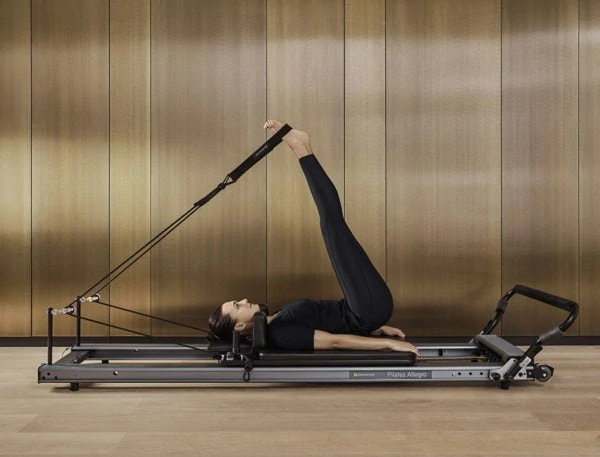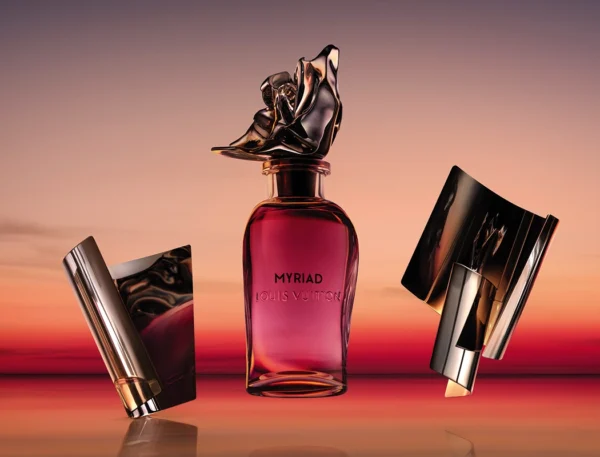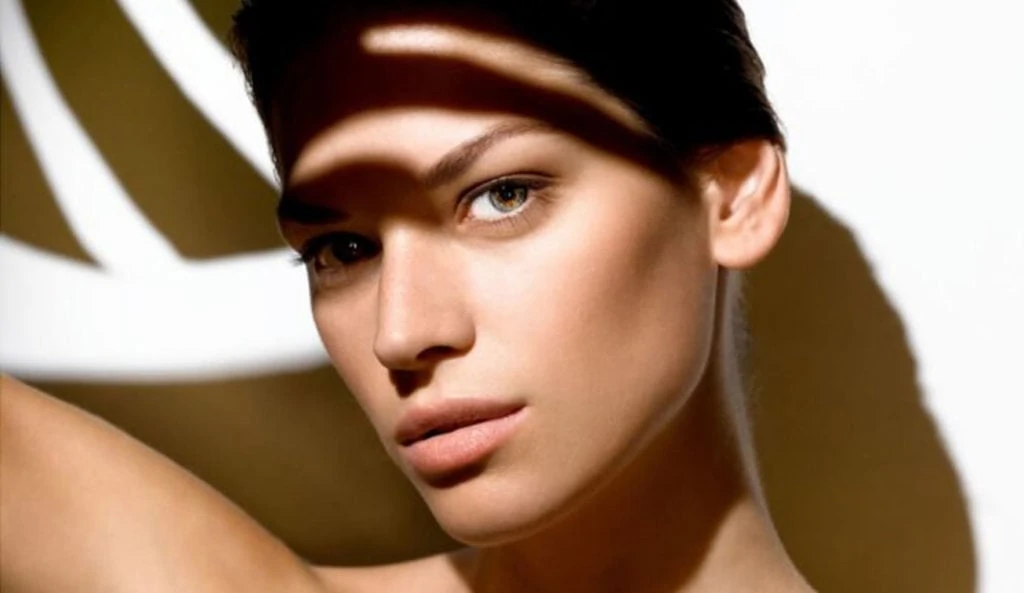 Pin
Pin A daily sunscreen habit doesn’t just protect your skin from the sun’s rays – experts agree that SPF is one of the most effective anti-agers we have at hand. With that in mind, it’s essential to apply protection year-round, not just when the sun is out. To shine a light on all things sunscreen, we spoke to two leading skincare experts to reveal everything you need to know about protecting your skin, plus we’ve hand-picked the best products to weave into your daily routine.
The benefits of sunscreen
“Over 80% of all ageing is due to the sun,” says Abi Cleeve, renowned skincare expert and founder of pioneering sunscreen brand Ultrasun. Let that sink in. When it comes to your skin health, there are two types of ultraviolet rays to be aware of – UVA and UVB. UVA rays have a longer wavelength and are a year-round issue, since they can penetrate both cloud cover and glass. These rays also go deeper into the skin and are associated with premature sun-related ageing, known as photo ageing, that leads to wrinkles, pigmentation and collagen breakdown. UVB rays, on the other hand, have shorter wavelengths and are linked to skin burning. Both UVA and UVB rays have the ability to damage the DNA in our skin cells, so all-round protection is crucial.
The daily dose
Not all sunscreens are born equal – to find a good all-round option, there are a few things you should look out for. The Sun Protection Factor (SPF) only denotes how the product protects against UVB rays, the ones that can burn. “Everyone’s skin has a natural tolerance to the sun and the SPF is an indicator of how long you can stay [out in it],” says Cleeve. “If your natural tolerance is 10 minutes, an SPF 30 will give you up to 300 minutes of sun exposure.”
With sun protection, it is generally best to err on the side of caution and opt for a higher number. “I would always recommend using an SPF of at least 30 in the UK, 50 if abroad,” advises cosmetic doctor Sophie Shotter. “The reason for this is that the SPF is determined in a laboratory using a thick layer of sunscreen on a small patch of skin. The way most of us apply sunscreen means that the protection we get from it is far less than the bottle says.”
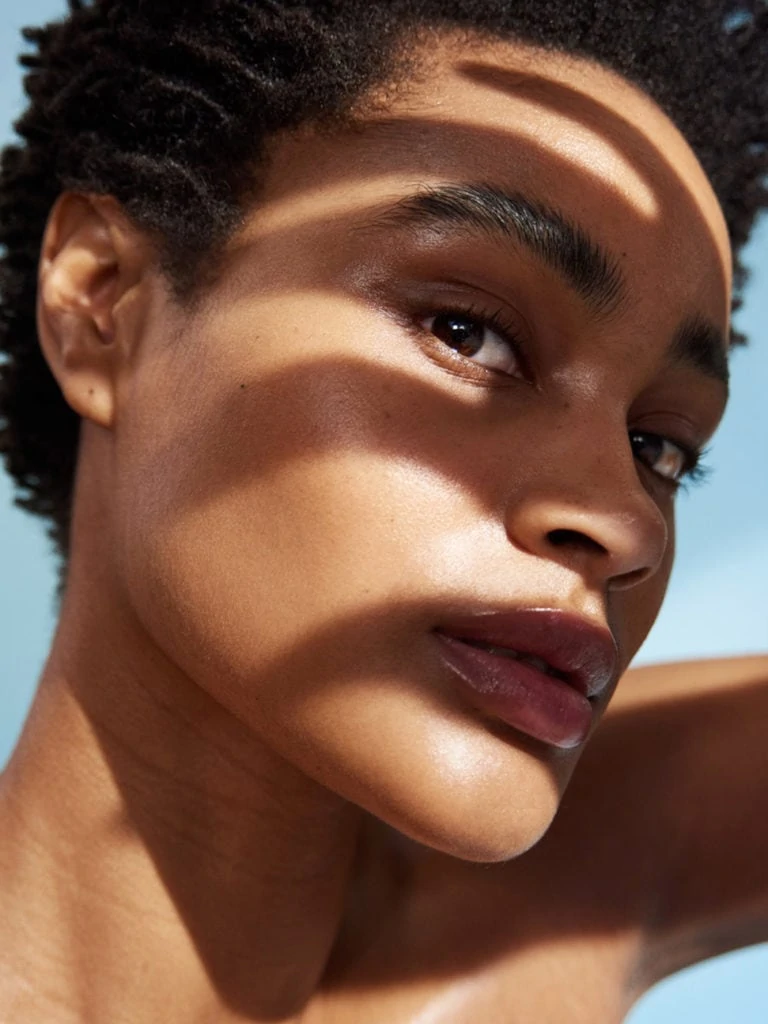 Pin
Pin SPF for different skin types
All skin colours behave slightly differently in the sun, but they all benefit from protection. Very fair-skinned people or redheads need the highest SPF 50+ to shield against burning, while solid UVA protection will prevent freckling and photo-ageing. Those with medium or olive skin tones are less likely to burn and tend to tan easily, but should still use an SPF 30+ to prevent any unwanted DNA damage. And the same goes for anyone with a deeper complexion or black skin – continue to apply SPF 30+ because, even though there is less chance the skin will burn, cell mutations and premature ageing are still issues. “UV rays are chief instigators when it comes to uneven skin tone and hyper-pigmentation, as it sends the melanin-producing cells – the melanocytes – into a production overdrive which causes patchy, uneven blemished skin tone,” says Dija Ayodele, aesthetician and founder of Black Skin Directory. “Studies show that while Black people are less likely to develop melanoma and non-melanoma skin cancer than Caucasians, they are more likely to die from it because it is usually detected at the later stages when it is more challenging to treat.”
Stick to the rules
As with any skincare product, you should follow the application guidelines. If you’re on a beach holiday (in the UK or abroad), you’ll want to apply sunscreen 15-30 minutes before heading out into the sun and reapply every 1-2 hours and after swimming. “Apply liberally to all exposed, or potentially exposed, parts of the body,” says Cleeve. “The official guidelines given by Colipa (Association of European Cosmetic Industry) are 2mg/cm2 – this approximately corresponds to one teaspoon worth for the face. As a rule of thumb, use a teaspoon of sunscreen for each arm, leg, front, back and face (including neck and ears).”
Since UVA rays age the skin every day, even when cloudy, it’s worth following these guidelines for exposed skin daily. To tackle UVA-related ageing, the key is to look for a product that explicitly says it is a ‘broad-spectrum sunscreen’, meaning it protects against both UVA and UVB rays. Other products may call out what percentage of UVA rays they can filter out (the EU standard being 33%). As long as the label mentions UVA protection, you’re on the right lines.
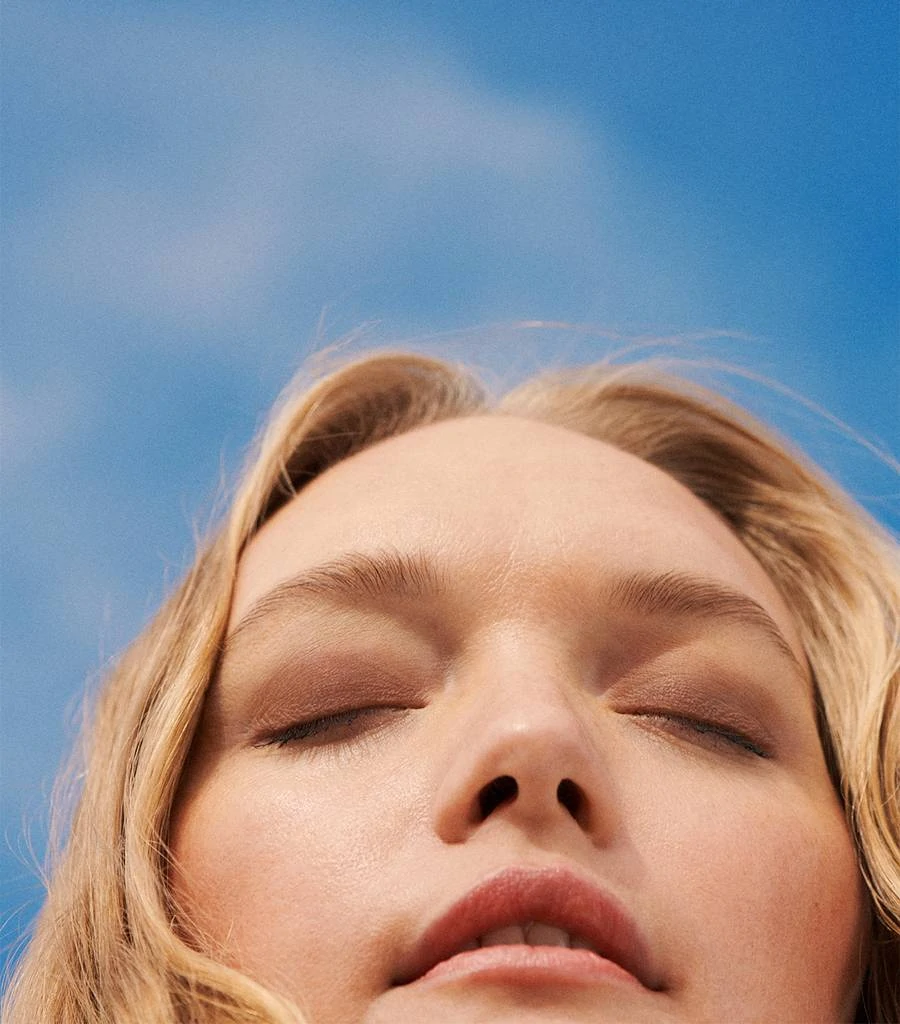 Pin
Pin Physical vs. chemical
Physical and chemical sunscreens protect the skin in different ways. Physical sunscreens contain minerals such as zinc oxide or titanium dioxide to shield the skin, reflecting the sun’s rays. Chemical sunscreens absorb the UVA and UVB rays, so your skin cells don’t have to. “When comparing physical with chemical filters, there are advantages and disadvantages with both,” Cleeve tells us. “With physical filters, the disadvantage can be that the skin is coated in a layer and very sensitive skin, especially when exposed to sun, can react. This we see in reactions such as prickly heat. Thick physical filters often mean that the skin can’t cool naturally – in simple terms, it’s tough for the skin to ‘breathe’ (it is an organ). The product can feel greasy, look very white and be hard to rub in.”
Chemical filters tend to be much more elegantly formulated, don’t tend to leave a white cast and sink beautifully into the skin. But, as Cleeve notes, “the skin is a great carrier of product into our body – just look at the effectiveness of patches for nicotine or HRT. Knowing this, we have to be very careful about what we put on it.” That’s not to say chemical sunscreen should be avoided entirely, but these days many brands look to combine the technologies of both the physical and chemical.
Sunscreen and the planet
While sunscreen is always a good choice for our skin, it’s not always good for the environment. It’s estimated that between 4,000 – 6,000 tonnes of sunscreen washes off into coral reef areas each year to disastrous effect. In 2018, Hawaii made headlines by becoming the first state in America to ban the sale of sunscreens containing two chemicals – oxybenzone and octinoxate – that researchers deemed harmful to aquatic life. A good start is to avoid products containing these chemicals – many will signal on the packaging that they are ‘reef safe’, which makes them a better choice if you’re heading to the beach. “Mineral sunscreens are a very safe bet,” notes Shotter. Alternatively, you could look to wear a rash vest or suit, like the Une Piece Original Sexie Rashie Navy (£112, unepiece.com), when heading into the ocean.
The blue light blocker
Blue light emitted from our devices (laptops, iPads, smartphones) doesn’t just affect our sleep patterns – it can trigger photo ageing too. “HEVL (blue light) penetrates more deeply into the epidermis, generating free radicals and causing skin cells to produce enzymes that break down collagen and elastin [leading to fine lines, wrinkles and lack of firmness]. This process is known as oxidative stress and can [also] lead to hyperpigmentation,” explains Cleeve. While HEVL isn’t emitted from the sun, some sunscreens can help reduce the negative effects of these rays. Iron oxide found in tinted sunscreen formulas provides protection from HEVL and since the blue light triggers free radicals in the skin, it’s also worth looking for a sunscreen packed with antioxidants that can mitigate some of the damage cause by both HEVL and the UVA and UVB rays. As an added precaution, keep your devices on night mode throughout the day, as this emits a warmer light that is not as harmful to the skin.
Abi Cleeve’s Fast Sunscreen Facts
Some body parts are more vulnerable
For women, the more susceptible areas are likely to be on the shins and feet. The most common sites for men are the chest, back and scalp. Lips are often forgotten too, and with no natural shade, the upper lip area in particular shows ageing from sun damage quicker.
Perfume and the sun don’t mix
Sprayed directly onto the skin, perfume is so aggressive that it undermines the skin’s ability to protect itself against UV damage. That means the level of protection you get from your sunscreen is diminished as well, and that’s why you often see women with speckled pigmentation patches on their necks and chest.
Don’t rely solely on the SPF in make-up
A number of make-up brands contain sunscreen but not UVA protection. They often tend not to be water-resistant and, by the very nature of their intended use, are applied a lot more thinly and therefore are often not providing the same level of protection as ‘pure’ sunscreens. Always apply broad-spectrum sun protection of SPF 30 or above before make-up.
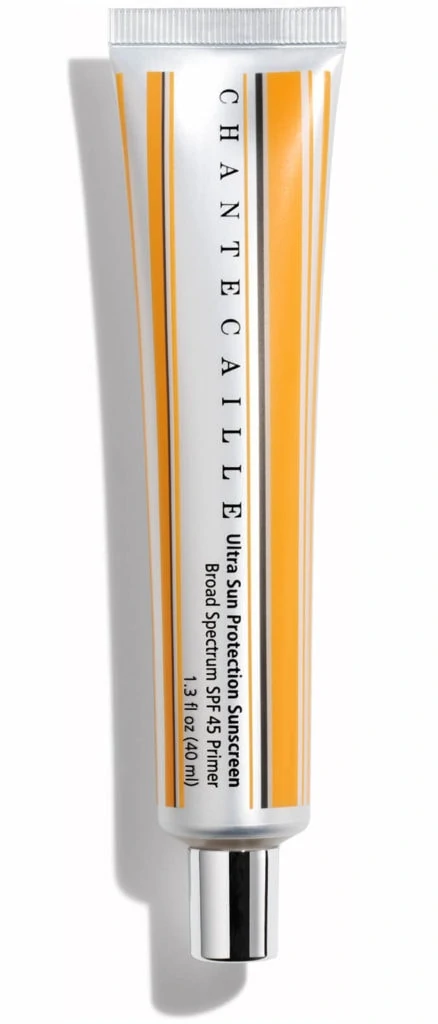 Pin
Pin Best for Under Make-up:
Chantecaille Ultra Sun Protection SPF 45, £84
A lightweight priming sunscreen, this protects the skin from both UVA and UVB rays. It’s incredibly lightweight with no white cast and a satisfyingly matte finish. It also boasts free radical-fighting antioxidants. It isn’t reef safe, though, so reserve it for city days.
Best for Spot-Prone Skin:
Decree Daily Shield SPF 30, £75
This handy mist can be spritzed over or under make-up, delivering a hit of titanium dioxide and zinc oxide that shield the skin from UVA, UVB and HEVL light. Zinc oxide has antibacterial and anti-inflammatory effects, which makes this an ideal choice for acne sufferers. The addition of collagen-boosting peptides and antioxidants means it protects against photo-ageing and pollution, too.
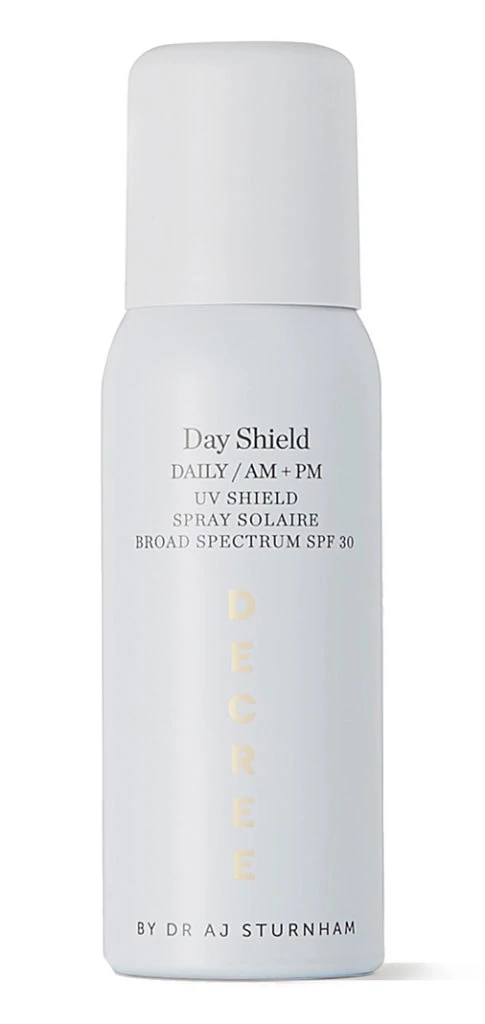 Pin
Pin 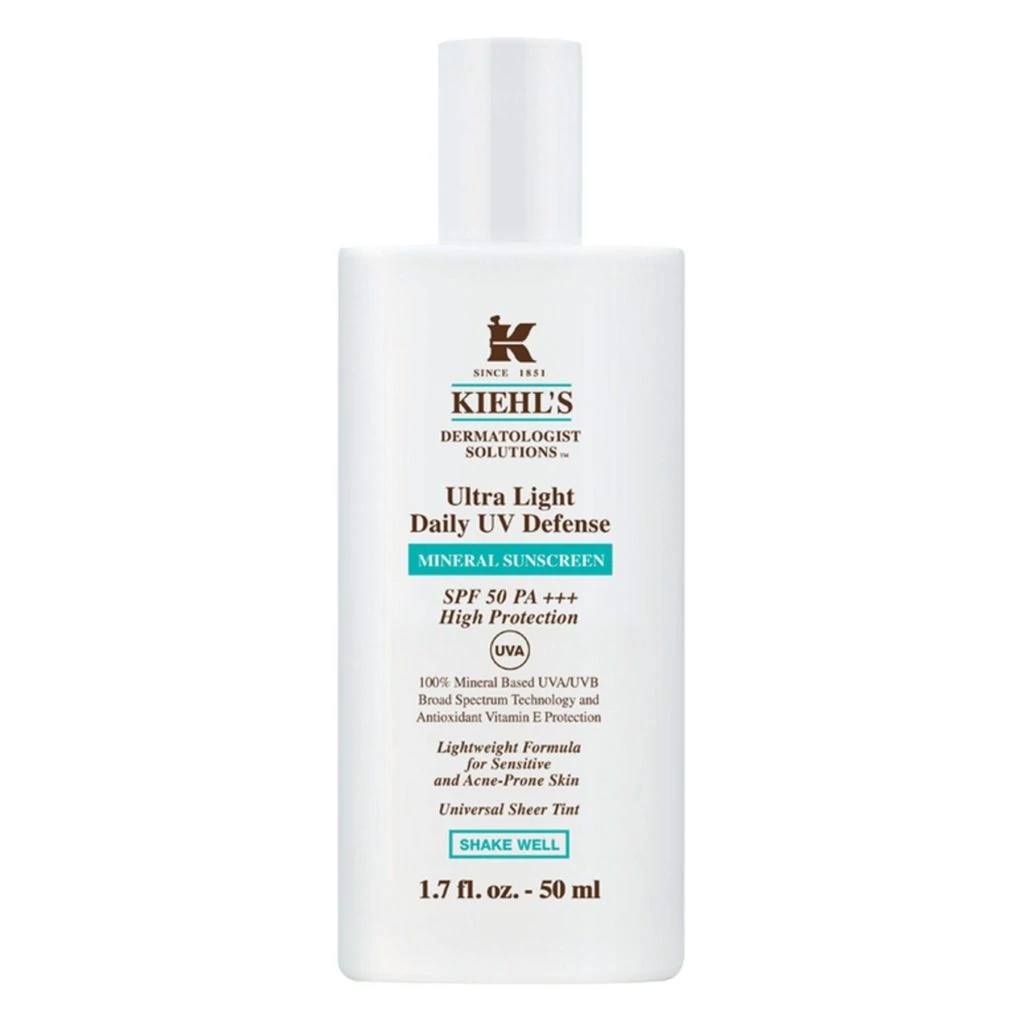 Pin
Pin Best for Mineral Sunscreen Devotees:
Kiehl’s Ultra Light Daily UV Defense Mineral Sunscreen SPF 50, £31
If you’re keen to avoid chemical sunscreens, then this 100% mineral option is a smart choice that’s suitable for even the most sensitive skins. Surprisingly lightweight, titanium dioxide guards the skin against UVA and UVB rays, while antioxidant Vitamin E tackles damaging free-radicals. It has a slight tint, meaning it won’t leave a white cast on the skin.
Best for Pigmentation:
Ultrasun Face Anti-Pigmentation SPF 50+, £32
Perfect for those struggling with pigmentation, this tinted formula protects from UVA and UVB rays, while the enzyme ectoin tackles the free radicals triggered by these rays and HEVL that can spur on melanin production. Use this sunscreen and not only will it prevent pigmentation, you’ll also see an improvement on existing dark spots.
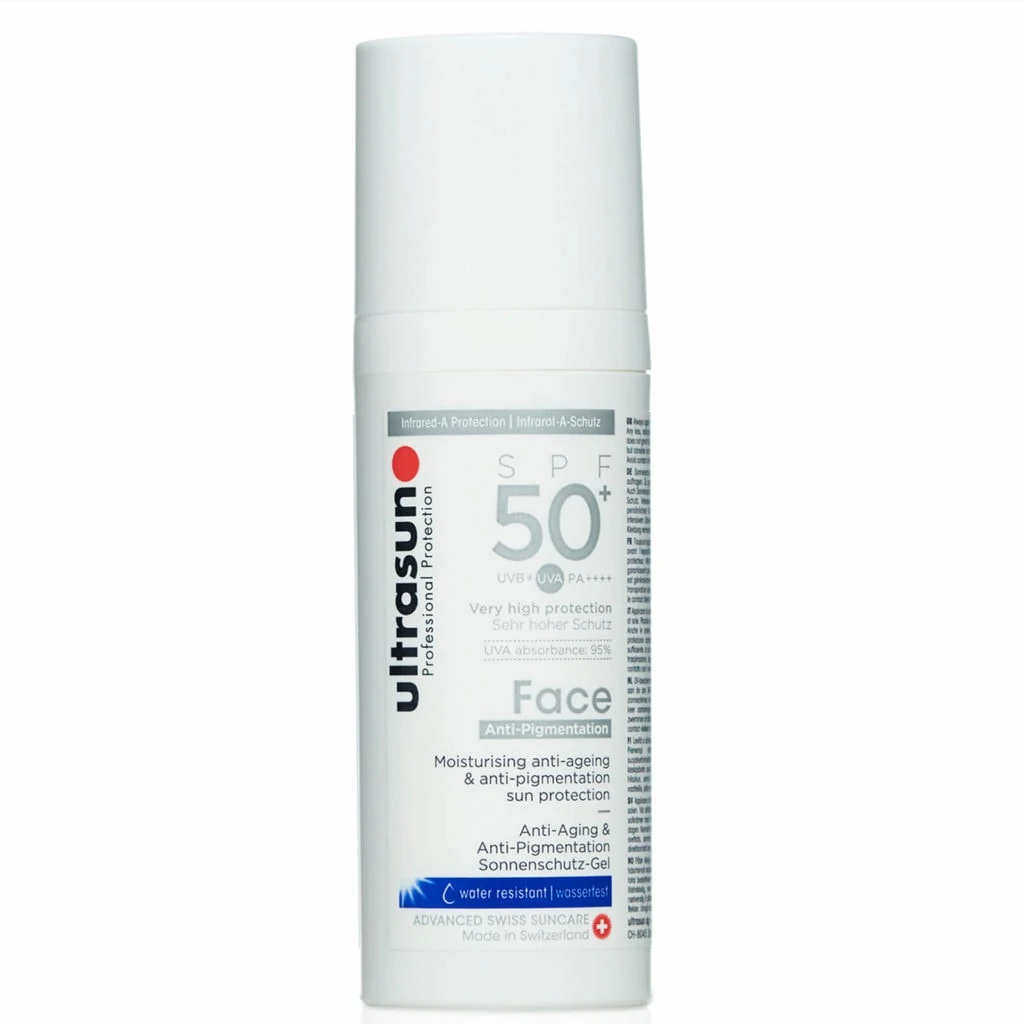 Pin
Pin 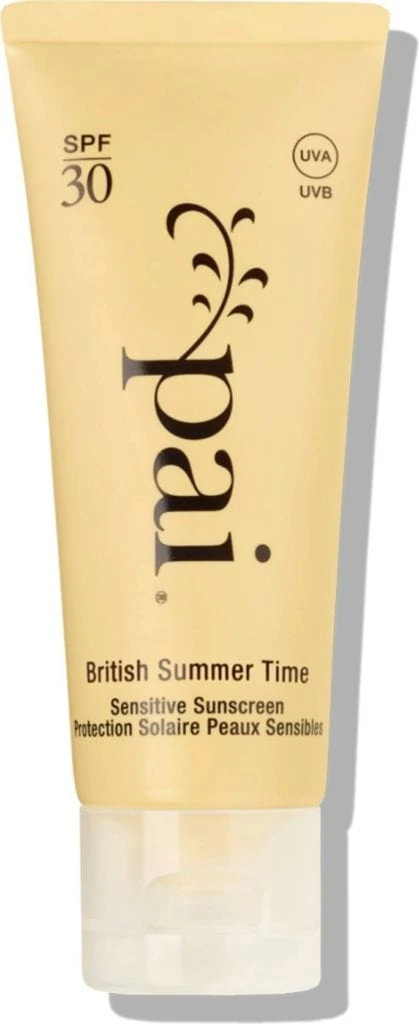 Pin
Pin Best for the Environment:
Pai British Summer Time – Reef Safe, £32
Looking for a reef safe sunscreen? This one from certified organic skincare brand Pai is a great option. Not only can you dip into the ocean worry-free with this 99% natural mineral SPF, but the formula is also gentle enough for sensitive skin and even eczema-prone complexions can use it. Nourishing ingredients like jojoba oil and squalene prevent dehydration, while the zinc oxide protects against UVA, UVB and HEVL.
Best for Targeted Protection:
Clinique SPF 35 Targeted Protection Stick, £19
Carry this portable sunscreen stick in your handbag at all times – offering solid SPF 35 protection that promises to defend against UVA and UVB rays, it’s ideal for shielding delicate areas on the go. Use it on your lips, eyes, ears, nose – even the backs of your hands, which are particularly prone to photo-ageing.
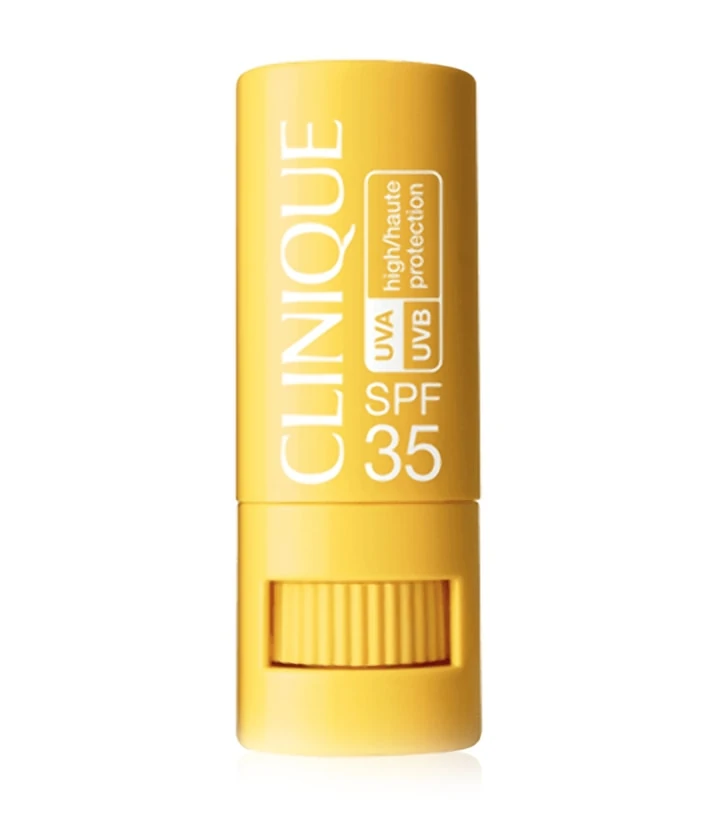 Pin
Pin 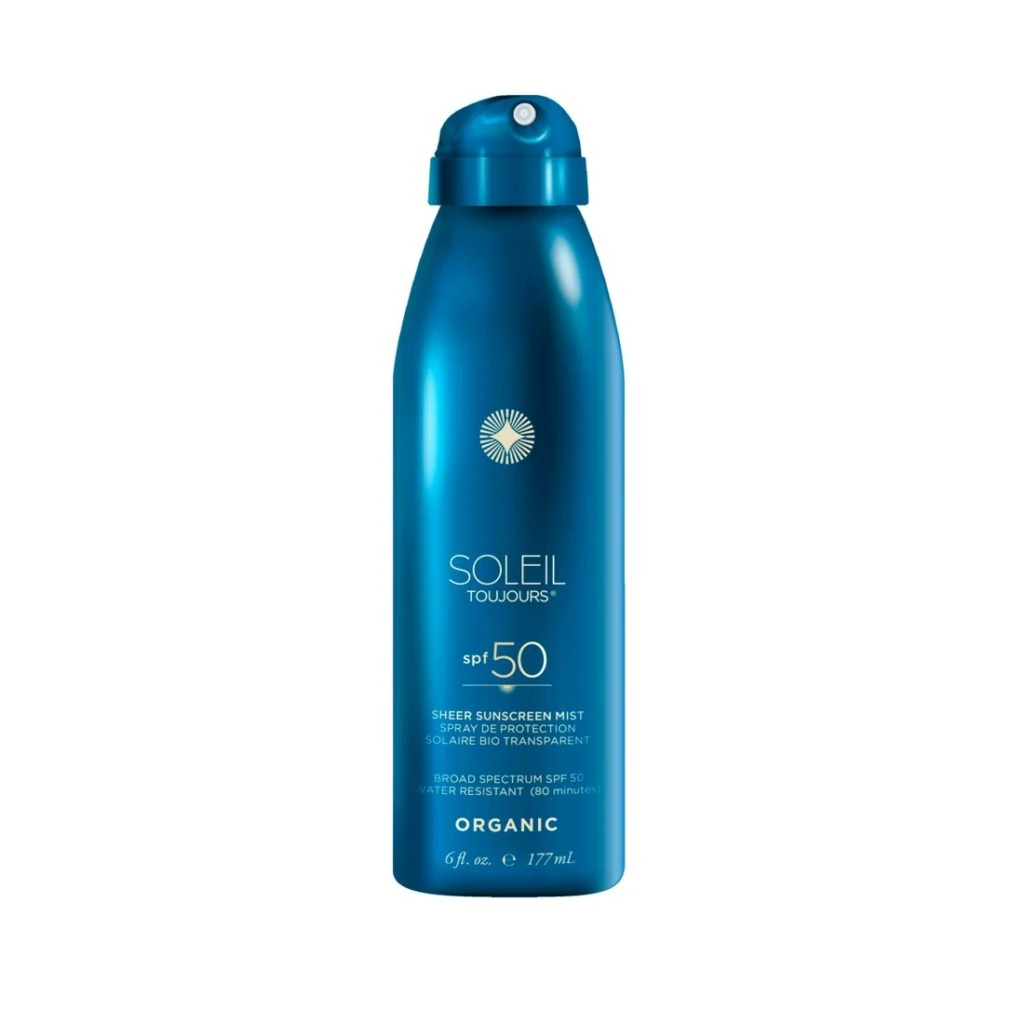 Pin
Pin Best for Body:
Soleil Toujours Organic Sheer Sunscreen Mist SPF 50, £32
Formulated without oxybenzone or octinoxate, this 70% organic formula boasts a cocktail of antioxidants, including red algae, Vitamin C and E, to bolster your skin’s protection from the sun’s rays while being considerate of the environment too. The high SPF 50 and broad-spectrum protection in a lightweight mist makes this easy for effortless reapplication. A no-brainer for beach getaways.
Best for Top-Ups:
Kate Somerville UncompliKated SPF 50 Soft Focus Makeup Setting Spray, £32.50
Think of this as a sunscreen and complexion perfector in one. The fine veil of mist with SPF 50 contains light-diffusing silicone powder that blurs imperfections and takes down unwanted shine. Hyaluronic acid ensures that your skin is left hydrated and matte without lacking a healthy-looking luminosity.
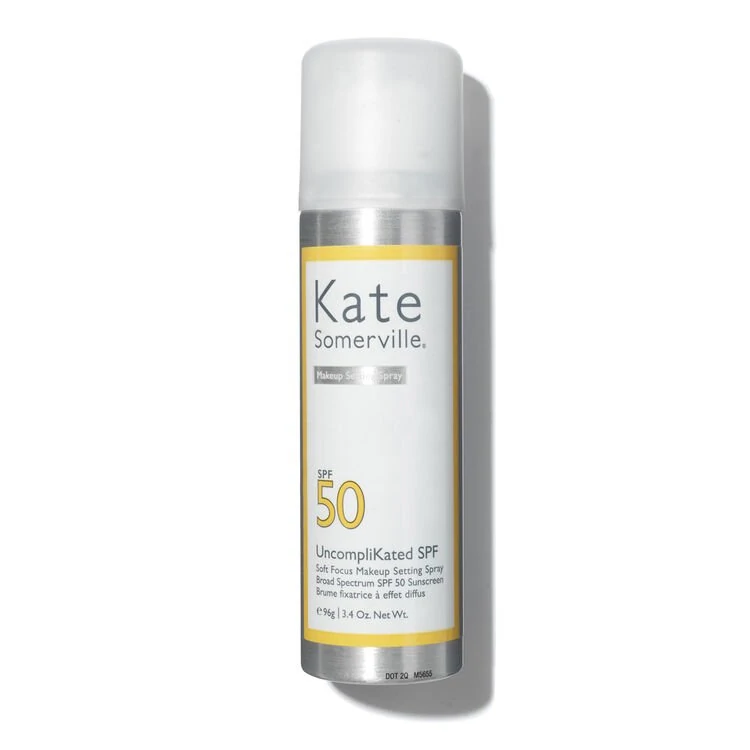 Pin
Pin 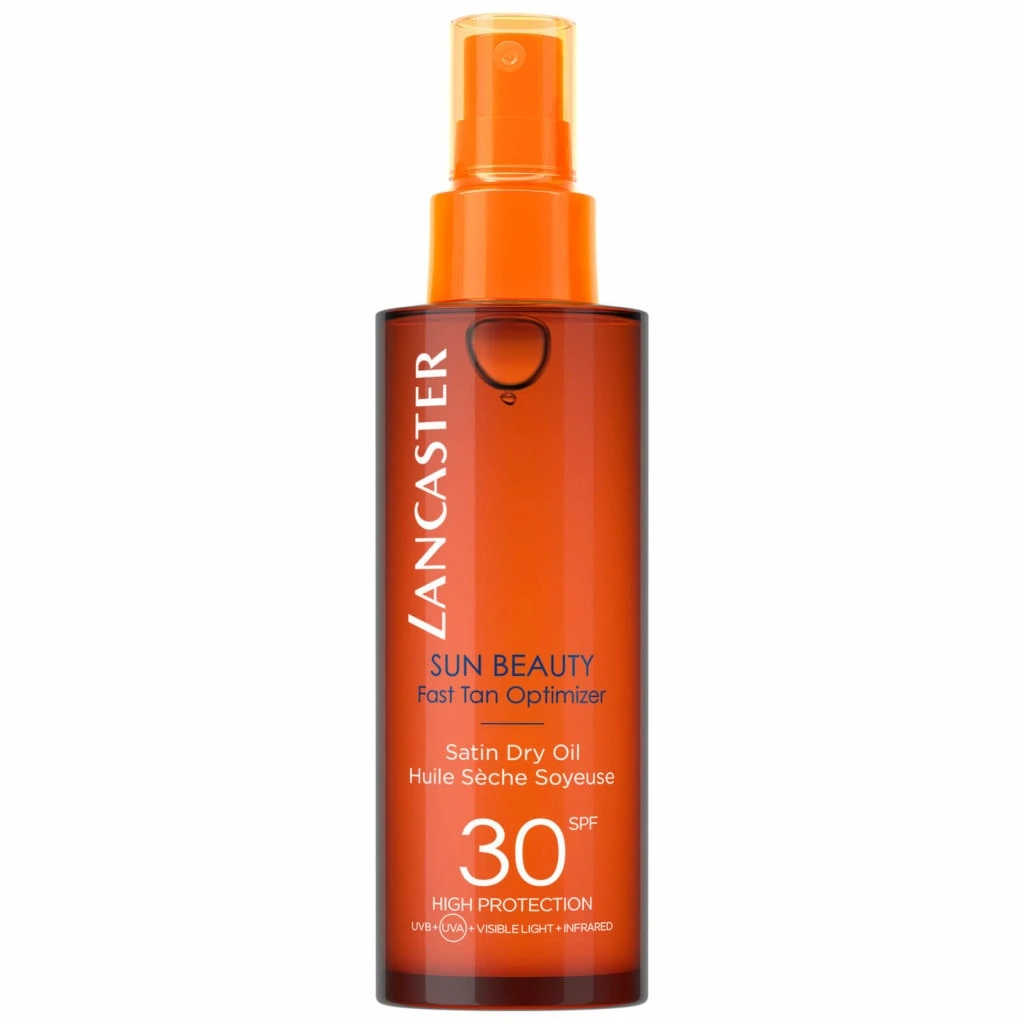 Pin
Pin Best for Glow:
Lancaster Satin Dry Oil SPF 30, £24
Tanning oils, traditionally, have a reputation for doing more harm than good, but this elegant formula has a hefty SPF 30 and a formula that protects against UVA. UVB and HEVL. With coffee, orange and antioxidant-rich buriti oil, it encourages an even tan, while maintaining elasticity in the skin and enveloping you in a subtle sheen.
Best for Blue Light Protection:
Colorescience Sunforgettable Total Protection Brush-On Shield SPF 50, £46.50
With over 20% of this natural powder being zinc oxide, a high SPF 50 and an impressive UVA protection rating, this handy brush-on product keeps your complexion shielded from the sun’s rays, as well as blue light. The water-resistant powder comes in four shades, from fair to deep, and can be kept in your handbag for touch-ups throughout the day. With glycerin and sodium hyaluronate, the powder mattifies the skin without leaving it feeling dry or tight.
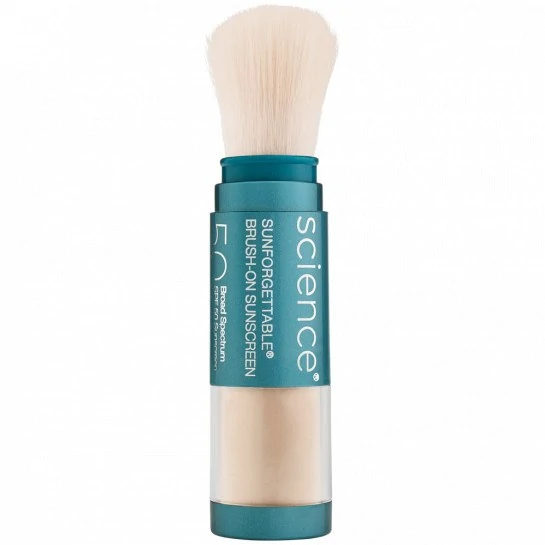 Pin
Pin 




